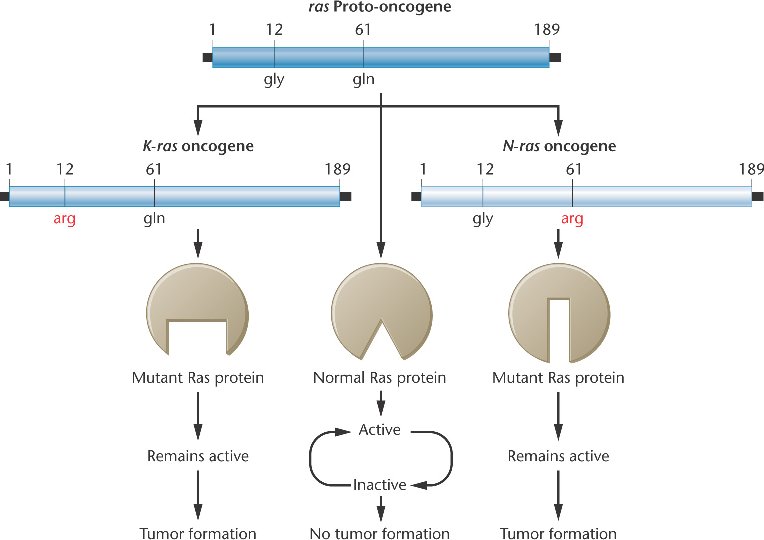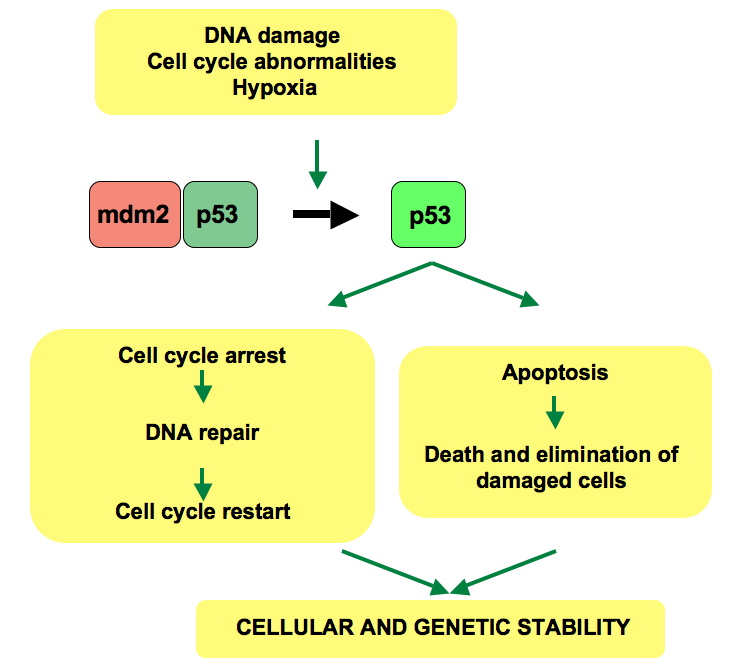原癌基因(proto-oncogene) 普遍存在于正常细胞中,有它们正常的作用。
致癌基因(oncogene) 由原癌基因突变而来,是显性基因(一对染色体上一个出问题就有麻烦)。这个相当于细胞分裂的油门(通过表达的蛋白起作用)。
肿瘤抑制基因是隐性基因(一对染色体上两个都不好使才会出问题)。这个相当于细胞分裂的刹车(通过表达的蛋白起作用)。你把它剪掉了岂不是要得癌症?
一个例子:ras oncogene (ras 致癌基因):它对应的ras 蛋白有189个氨基酸, 是细胞分裂的油门。如果第12/61个氨基酸编码突变,就成了致癌基因(油门常开)。例如k-ras 已知与肠癌有关。

再看一个例子:肿瘤抑制基因 p53。 从下图它的作用可以想象突变的后果。

Oncogene (2003) 22, 9030–9040. doi:10.1038/sj.onc.1207116
Control of apoptosis by p53
Jordan S Fridman1,3 and Scott W Lowe2
- 1Incyte Corporation, Wilmington, DE 19880
- 2Cold Spring Harbor Laboratory, 1 Bungtown Road, Cold Spring Harbor, NY 11724, USA
Correspondence: SW Lowe, E-mail: lowe@cshl.edu
3Current address: Incyte Corporation, Newark, DE 19711, USA
Abstract
The p53 tumor suppressor acts to integrate multiple stress signals into a series of diverse antiproliferative responses. One of the most important p53 functions is its ability to activate apoptosis, and disruption of this process can promote tumor progression and chemoresistance. p53 apparently promotes apoptosis through transcription-dependent and -independent mechanisms that act in concert to ensure that the cell death program proceeds efficiently. Moreover, the apoptotic activity of p53 is tightly controlled, and is influenced by a series of quantitative and qualitative events that influence the outcome of p53 activation. Interestingly, other p53 family members can also promote apoptosis, either in parallel or in concert with p53. Although incomplete, our current understanding of p53 illustrates how apoptosis can be integrated into a larger tumor suppressor network controlled by different signals, environmental factors, and cell type. Understanding this network in more detail will provide insights into cancer and other diseases, and will identify strategies to improve their therapeutic treatment.
Keywords:
P73, P53, P63, apoptosis, tumor suppressor